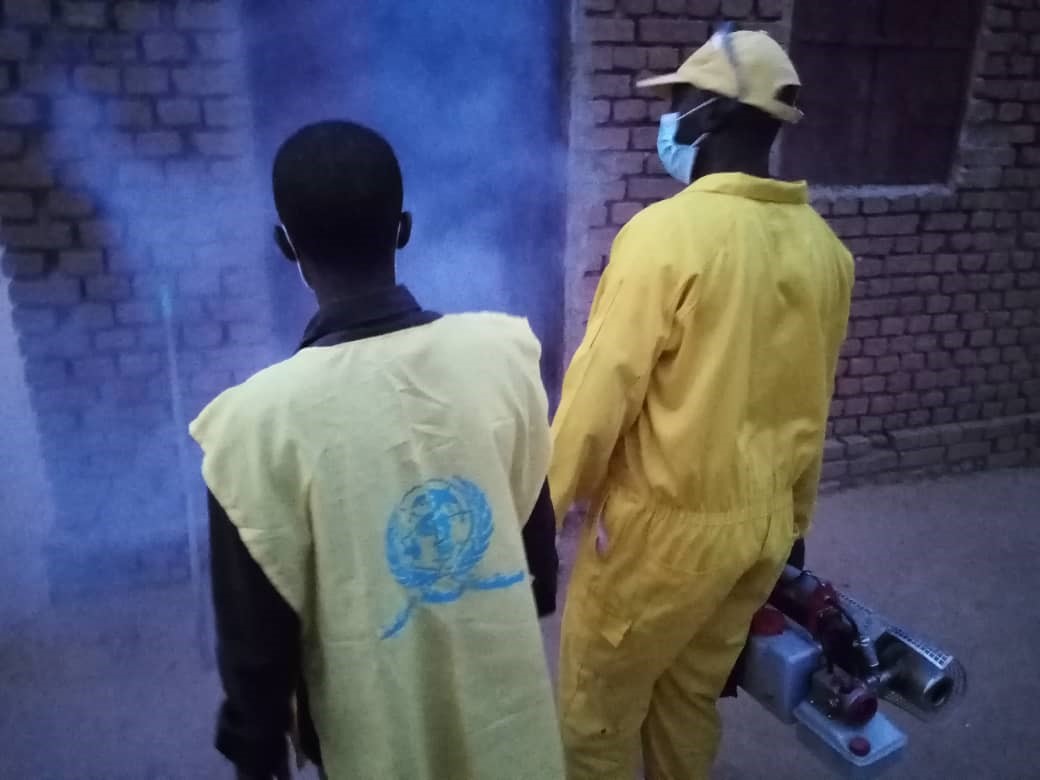
6 December 2020 – In North Kordofan, heavy rains and floods have increased mosquito-borne diseases, malaria in particular, as prolonged rains increase the amount of stagnant water in the environment in which mosquitoes breed. To reduce morbidity and mortality related to water and vectors and to protect vulnerable communities, WHO supported a series of activities to proactively contain any potential outbreak and improve preparedness. These activities targeted water, sanitation and hygiene, water quality monitoring and vector surveillance.
In previous years, the state of North Kordofan faced a lack of access to safe water and had previously experienced a cholera outbreak in 2017. With this year’s record-breaking floods, and to ensure effective preparedness for potential health emergencies, WHO supported the State Ministry of Health to improve water quality and reduce the threat of malaria in the state’s 8 localities.
WHO trained a total of 30 emergency health officers on water quality monitoring through sampling and analysing water constituents and conditions to identify whether waters are safe for use and consumption and that they meet drinking-water standards. Health workers were also trained on surveillance and reporting, which serve as an early warning system, identify public health emergencies through systematic collection, analysis and interpretation of data that is essential to the planning, implementation and evaluation of public health practice.
One of the major risk factor for outbreaks associated with flooding is the contamination of drinking-water which increases the likelihood of the transmission of waterborne diseases, such as acute watery diarrhoea, dysentery or typhoid fever. In order to combat waterborne diseases, improving water quality is very important as these diseases are mainly transmitted through contaminated water sources. Different disinfection methods are used to inactivate infectious agents. Adding chlorine (chlorination) to treat water is one of many methods that can be used to disinfect water making it safe for public consumption and creating potable water sources.
At the end of the training, the emergency health officers were enabled to conduct water quality missions and to test water. Officers improved their knowledge about water-related diseases, the importance of water safety and why surveillance plays a key role in proactive response. In addition to that they were trained on using different testing tools through practical training, along with sanitation and disinfection methods.
As a result, a total of 4305 samples were tested for free chlorine residual to identify the amount of chlorine in the water and 764 were tested bacteriologically to identify the presence of any bacteria, accordingly, all sources were chlorinated and treated.
WHO also supported vector house-to-house inspections and community engagement activities to raise awareness around vector-borne diseases and preventive measures. A wide range of vector control tools exist, which all aim to minimize breeding sources to reduce vector-related diseases. One of the most important activities to protect communities are house-to-house inspections and spraying effective in limiting the presence of mosquitoes. This is achieved by removing sources of stagnating water (e.g. gutters and drains) and open water storage containers. These efforts resulted in the reduction of mosquito larval density by the elimination of a total of 3339 mosquito breeding sites.


